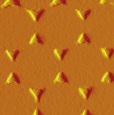
Odor-Eating Silver Nanoparticles Raise Concern
Nanotechnology is now everywhere, including, quite possibly, on your feet. Valued for its antibacterial and odor-fighting properties, nanoparticle silver is becoming the star attraction in a range of products from socks to bandages to washing machines. But is it also getting into the water supply and posing unknown risks? That is a question scientists at Arizona State University set out to answer. They presented their findings April 6 at the national meeting of the American Chemical Society in a report they titled "Fate and transport of ionic and nanoparticle silver released from commercially available socks."
“This is the first report of anyone looking at the release of silver from this type of manufactured clothing product,” said report authors Paul Westerhoff and Troy M. Benn, who bought six pairs of name brand anti-odor socks impregnated with nanosilver and then soaked them in a jar of room-temperature distilled water and shook the contents for an hour. They then tested the water for two types of silver--the harmful “ionic” form and the less-studied nanoparticle variety. The results? Ordinary laundering can wash off substantial amounts of the nanosilver particles from socks impregnated with the material. The researchers suggest that the particles, intended to prevent foot odor, could travel through a wastewater treatment system and enter natural waterways where they might have unwanted effects on aquatic organisms living in the water and possibly humans, too.
“From what we saw, different socks released silver at different rates, suggesting that there may be a manufacturing process that will keep the silver in the socks better,” said Benn. “Some of the sock materials released all of the silver in the first few washings, others gradually released it. Some didn’t release any silver.” He added that if sufficient nanosilver leeches out of these socks and escapes wastewater treatment systems into nearby lakes, rivers, and streams, it could damage aquatic ecosystems. Ionic silver, the dissolved form of the element, does not just attack odor-causing bacteria. It can also hijack chemical processes essential for life in other microbes and aquatic animals. “If you start releasing ionic silver, it is detrimental to all aquatic biota. Once the silver ions get into the gills of fish, it’s a pretty efficient killer,” Benn said, adding that ionic silver is toxic to humans only at very high levels. The toxicity of nanoparticle silver, said Westerhoff, has yet to be determined.
Westerhoff's and Benn's research will appear in an upcoming issue of Environmental Science & Technology. For more information, meanwhile, visit http://pubs.acs.org/cen/news/86/i15/8615news1.html.